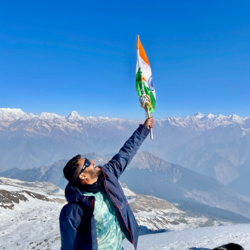A goldmine for outdoor adventure enthusiasts, Nepal sees a massive number of visitors each year from every corner of the globe hoping to get a glimpse of some of the world’s most impressive mountains. No matter where you strap your boots on, the adventure you choose is sure to incredible, so long as you keep a few key points in mind as you prepare for your journey. Do yourself a favor and have a look at these five tips others who have trekked in Nepal have to share now that they’re home:
Photos courtesy of Srijan Bannerjee

1. Permits Permits Permits
They won’t let you on your trek without one, but don’t get caught off guard when you’re all ready to start, and realize you can’t because of some simple paperwork that you didn’t know about.
Nepal’s trekking systems are fairly organized, and essentially any route you take in the country will require you to have at least one permit, and oftentimes two (which also have different price tags depending on where you’re visiting from and which trek you’re attempting).
Most often, the combination involves something called a TIMS permit for 1,000 NPR, a personal document required for essentially every Nepal trek, and then a permit for the specific region or park you intend to visit.
For example, the trek to Annapurna Base Camp requires a permit for the park itself (2,000 NPR for foreigners and 200 NPR for SAARC nationals) and a TIMS permit.
SAARC stands for South Asian Association for Regional Cooperation, and all countries part of this group (Afghanistan, Bangladesh, Bhutan, India, Nepal, the Maldives, Pakistan and Sri Lanka) qualify for this reduced permit price. So trekking ABC for Indians or anyone else in this group would incur a permit cost of 200 NPR plus the TIMS permit cost.
Research ahead of time to make sure you know what and how to get the permits you’ll need for your destination. Most permits can be obtained (and additional questions answered) at the Nepal Tourism Board Office in Kathmandu. If this doesn’t sound like something you’re interested in, any tour operator will handle these matters should you choose to trek with them.

2. Plan Ahead
While no adventure is fun without a bit on spontaneity, no adventure is fun either if it doesn’t happen because you didn’t plan ahead well enough. Having a little knowledge ahead of time can take you a long way, literally, and make sure you don’t run into trouble along the way.
First thing’s first: plan some contingency days. The weather is unpredictable, and many trails require a domestic flight within Nepal to reach the trailhead. Everest Base Camp, for example, requires you to fly from Kathmandu to Lukla (although doing a little digging into what the best season to hike EBC is never hurt anyone either). These flights can often be cancelled or delayed in such situations, so it’s best to play it safe and build in a few-days’ buffer before any upcoming international flights. Also, Kathmandu and the areas you will cross through en-route to your trek are well-worth visiting, and many of the treks have stunning side hikes fully deserving of an extra day or two. Give yourself the opportunity to explore.

Know also that you can do many of the treks alone. As long as you know which villages your route requires you to pass through and getting the permits yourself doesn’t scare you, trails in Nepal are fairly well-marked and have a lot of resources along the way (such as tea houses for food and shelter). Exactly the reason why you shouldn’t overpack- while it’ll save you money to bring your own stuff, these trailside huts also sell essential items, so you will most likely find whatever you need along the way.
3. Hydration
This is extremely important. The Himalayas are stunning, but don’t let that be an excuse for forgetting to hydrate. While it will keep you healthier in general, making sure you drink plenty of water will also help you to acclimatize better to high altitudes and avoid AMS. Reaching these high altitudes gives you views you’d never find anywhere else, but it also comes with the risk of mountain sickness. Familiarize yourself with the symptoms and treatments, one of which is to remain sufficiently hydrated.
On the subject of hydration- ensure that you bring your own water bottles. While you can buy them along the way, they become more expensive the further into the trail you go, and are also ecologically harmful. If you’re comfortable with it, there are mountain streams to drink from, and certain trails also have filtered water available to fill up your bottles for a price.

4. Tea Houses
A hallmark of trekking Nepal, tea houses can be found on most of the major trails. They offer a peek into local Sherpa culture with hot meals and warm beds available for rent. Oftentimes if you buy dinner with them and breakfast the next morning, they’ll let you stay for free during the night.
Meals will be a little costly, given their remote nature, but offer you a chance to keep your pack weight light, try local food and support the local economy
5. Do Side Hikes
Here’s the deal- there are the main trails of Nepal, and a million more wonderful side hikes to be explored, oftentimes with better views than the main destination.
The Annapurna Circuit, for example, has a 2-day detour to the beautiful Tilicho Lake, adding a special element to the overall route. If you have the time, don’t hesitate to research your route and see what extra little additions you can incorporate to make the journey just that much more spectacular.
And of course this goes without saying, but bring your camera. You’re going to need it.






